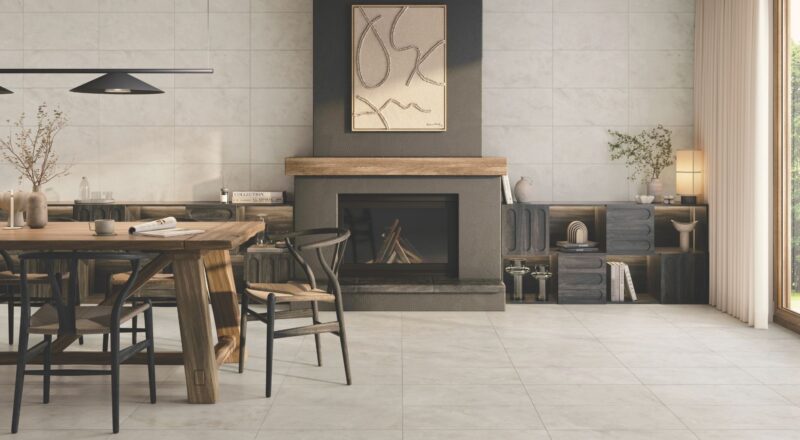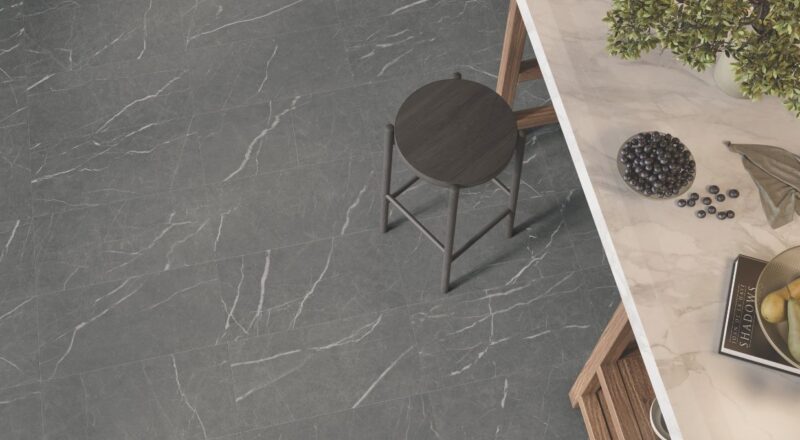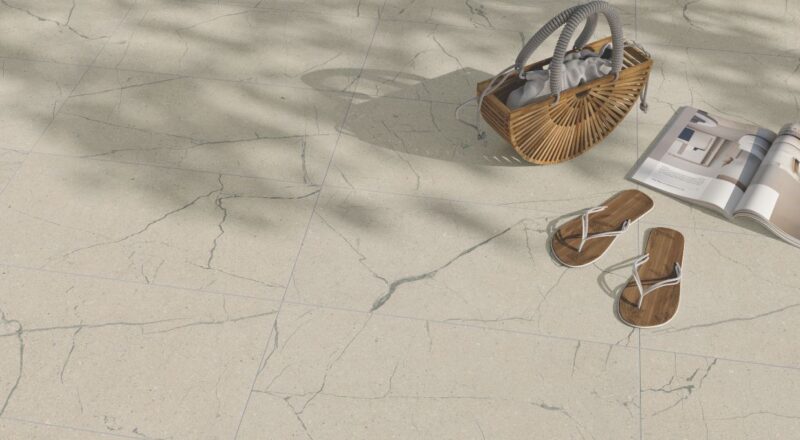A Brief History of Terracotta
Terracotta in Ancient Times
Terracotta’s literal translation from Italian is “baked earth.” You’ll see terracotta, also spelled “terra cotta and terra-cotta,” none of which are wrong. This ancient material dates back thousands of years: in Chinese Pottery (from 10,000 BCE), Greek Pottery (from 7,000 BCE), and Mesopotamian and Egyptian arts and sculptures. The oldest known work of terracotta sculpture (26,000 – 24,000 BCE) was found at a Stone Age settlement in the Moravian basin in the Czech Republic. This prehistoric art piece is known as the Venus of Dolní Věstonice.

 By Petr Novák, guidance: Danny B., CC BY-SA 2.5, via Wikimedia CommonsCitation: Venus of Dolní Věstonice. (2023, September 13). In Wikipedia.
By Petr Novák, guidance: Danny B., CC BY-SA 2.5, via Wikimedia CommonsCitation: Venus of Dolní Věstonice. (2023, September 13). In Wikipedia.
One of the greatest works in the sphere of terracotta sculpture is the Chinese Terracotta Army, made during the time of Qin Dynasty art (221-206 BCE). The Terracotta Army is a collection of terracotta sculptures depicting the armies of Qin Shi Huang, the first emperor of China. It is a form of funerary art buried with the emperor to protect him in his afterlife. Watch the Netflix documentary, Mysteries of the Terracotta Warriors, to learn so much more!

Terracotta Army, J mhullot, CC BY 3.0 via Wikimedia Commons
Terracotta in the 19th Century
Fast-forward from ancient times to the 19th Century: terracotta received approval as a building material from the Arts and Crafts movement, as it was considered a handmade material designed by artisans. From 1860-1970, architects in England and America used unglazed terracotta to ornament the outer wall of buildings.
“Terracotta” refers to either ceramics made from terracotta clay or the clay itself. Terracotta clay has a high iron oxide content. Depending on the amount of iron content, terracotta may appear cream, tan, dark brown, yellow, red, orange, pink, or grey. The tiles were handcrafted into many different shapes, making each tile unique. Common shapes were square, rectangular, hexagon, and parquet.
One superb example of a terracotta facade is the the Natural History Museum in London. The museum has an ornate terracotta facade typical of high Victorian architecture. The terracotta moldings represent the past and present diversity of nature.

Natural History Museum in London, by Diliff, CC BY-SA 3.0 via Wikimedia Commons
The Bell Edison Telephone Building in Birmingham, England, is a fantastic example of Victorian terracotta architecture.

By Oosoom at English Wikipedia, CC BY-SA 3.0
Terracotta in the 20th Century
What do the three of the most iconic buildings of the early 20th Century have in common? The Flat Iron Building in New York, the Wrigley Building in Chicago, and the Arctic Club Building in Seattle all feature intricate terracotta cladding. The glazed terracotta tiles mimicked elaborately carved stone, making the material a popular choice for building exteriors during the early 1900s.
Glazed terracotta tiles also became extremely popular for school interiors and exteriors, hospitals, and other spaces requiring special hygienic conditions.
Architectural terracotta largely disappeared by the mid-20th Century; however, there is now an active market for terracotta restoration products to maintain the legacy of landmark terracotta buildings.

Flat Iron Building in NYC by Fred PO, CC BY-SA 2.0 via Wikimedia Commons

Arctic Club in Seattle, by Hbobrien, CC BY-SA 3.0, via Wikimedia Commons
 Wrigley Building in Chicago, by Ken Lund from Reno, Nevada, USA, CC BY-SA 2.0, via Wikimedia Commons
Wrigley Building in Chicago, by Ken Lund from Reno, Nevada, USA, CC BY-SA 2.0, via Wikimedia Commons
Terracotta in the 21st Century
From terracotta sculptural art and exterior cladding to Spain’s terracotta roofs, the terracotta brick courtyards found in the South’s oldest cities, and the terracotta floors of provincial French cottages of 150 years ago, the material has a long history of being popular throughout the ages. Today’s surge in popularity means that terracotta tiles are still on trend. Still, for superior durability and easy maintenance, terracotta-inspired ceramic and porcelain are excellent alternatives for many interior design projects for several reasons.
Terracotta Tiles are Soft
Terracotta is fired at a lower temperature than most ceramics, meaning it’s softer and more fragile. The tiles are prone to cracking and breaking when and cannot tolerate exposure to extreme temperature changes. On the other hand, ceramic tiles are denser and harder, which means they are more durable and can withstand temperature changes. The porcelain tile category is the most durable because the tiles are fired at extremely high temperatures, making them denser, harder, and the most durable ceramic tiles. Porcelain tiles are strong enough for the most demanding applications, can withstand heavy foot traffic, and beautifully hold up to extreme temperatures.
Terracotta Tiles are Porous
Unlike ceramic and porcelain tiles, unglazed terracotta tiles are quite porous and can absorb liquids, which makes them prone to staining. You must seal terracotta tiles regularly to protect them from spills and moisture. Ceramic tiles are just slightly porous and water resistant (just don’t let water or other liquids stand for too long). Porcelain tiles are considered impervious (non-porous) because they have less than 0.5% water absorption rate. Impervious to liquids means that porcelain tiles are mold-resistant, stain-resistant, and bacteria-resistant. When you need a flooring option that will hold up well to moisture, there are few options better than porcelain tiles.
Durability, Repair, and Maintenance Disadvantages of Terracotta
Terracotta tiles are more maintenance-intensive than porcelain tiles. They require regular sealing and care to protect them from spills and moisture. Terracotta tile installation can be tricky, too, and because they are softer, they are more prone to chipping and cracking.
Crossville Terracotta-Inspired Porcelain Tile
Fashion meets function —Bohemian style —with this new terracotta-inspired floor and wall tile collection. Cotto Moderno porcelain tile brings forth the essence of the earth, transforming raw materials into art. The tile collection is a stunning line of whitewashed colored terracottas, naturally aged and shaded in sand, cotto, graphite, grey, and off-white. This durable porcelain tile is strong enough to withstand the demands of commercial environments, indoors or out.
Cotto Moderno is recommended for interior floors, interior walls, countertops, exterior walls, pool waterlines and full linings in both residential and commercial applications.
For interior floors, all walls, and water lines, two 8″ hexagon formats and a unique 2″x16″ flat long brick porcelain tile bring visual texture to contemporary interiors.
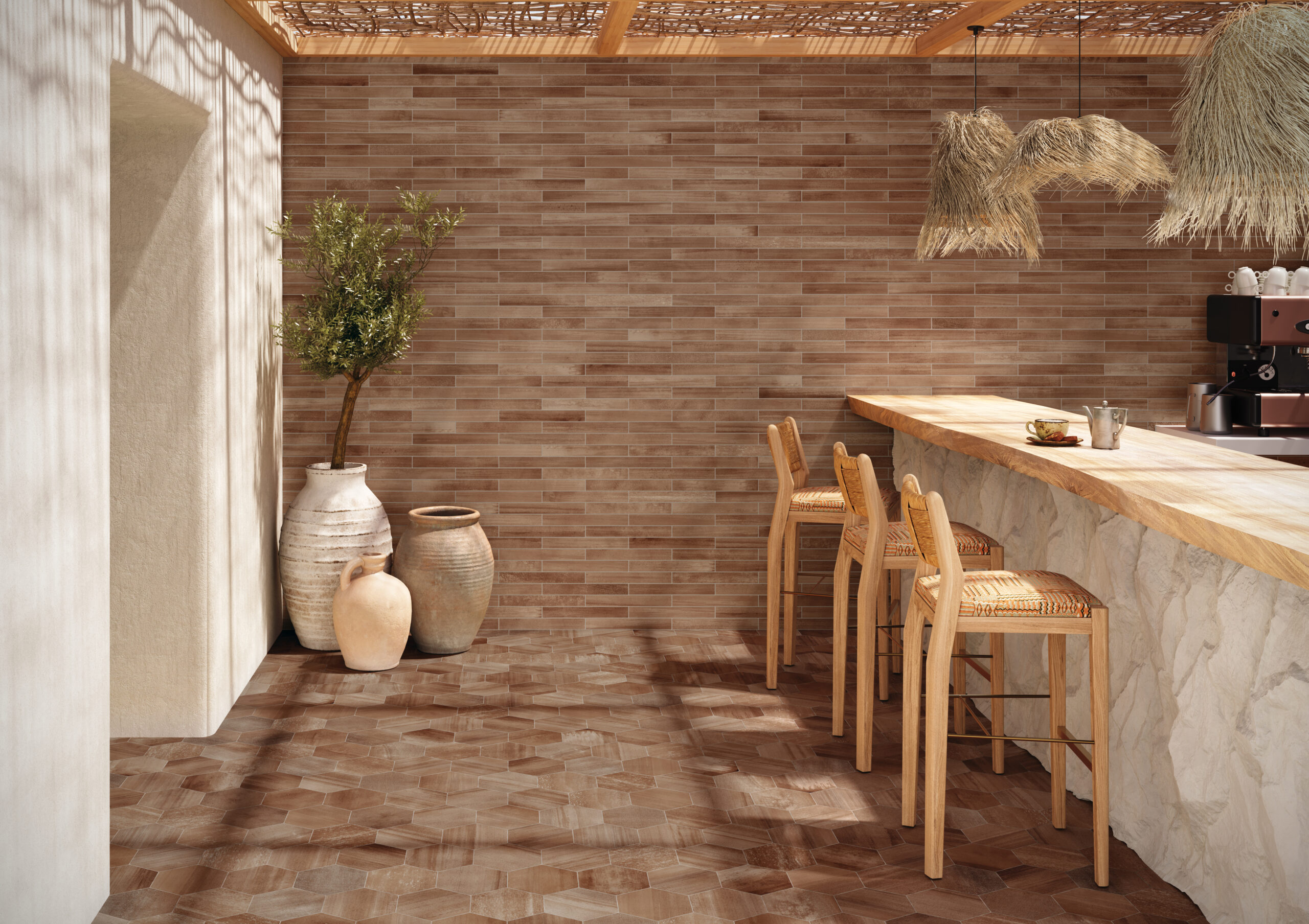
2″x16″ flat long brick in Naranja

8″ flat hex and chevron hex in Naranja and Bianco, 3′”x10″ undulating wall brick in Bianco
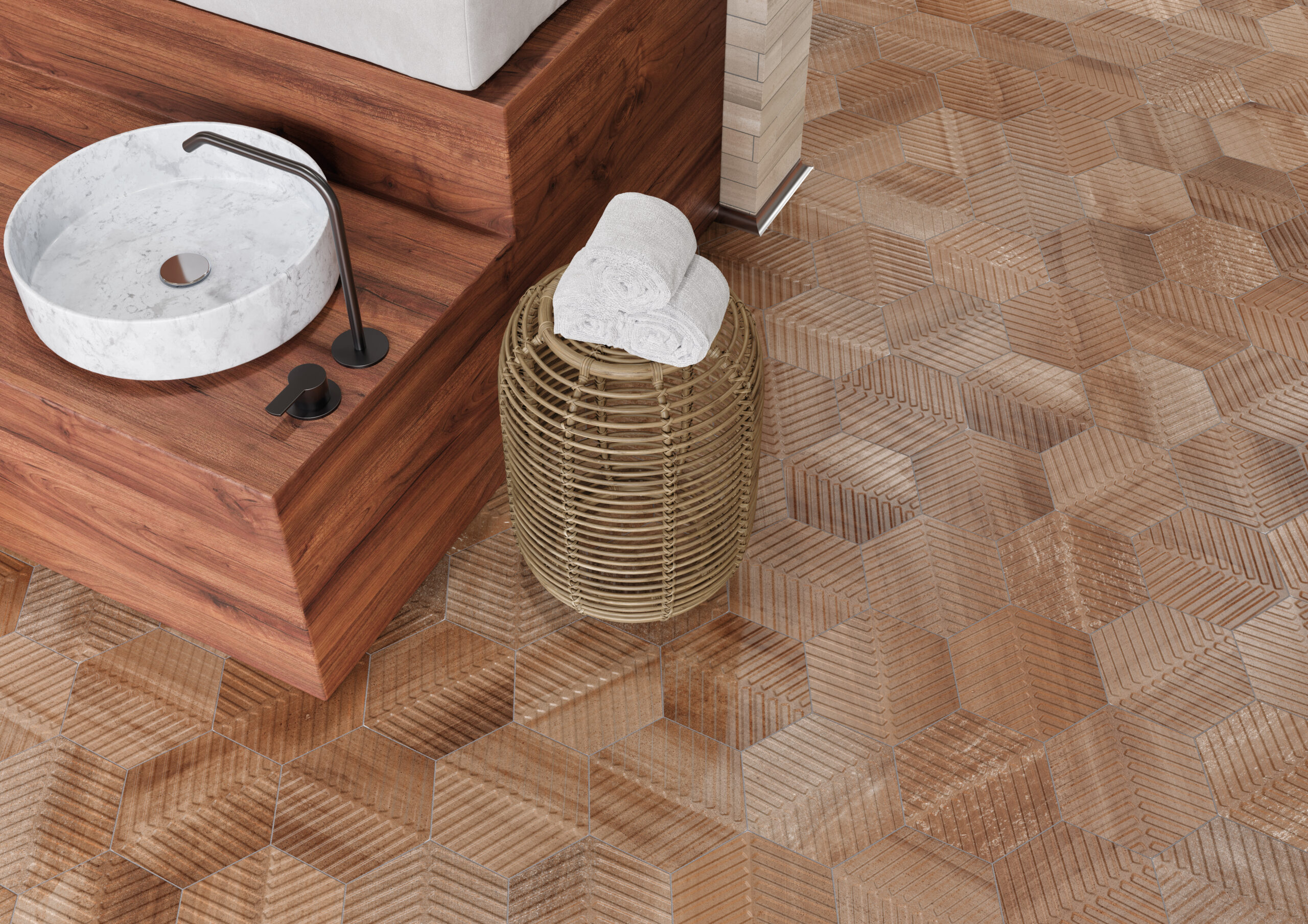
Flat 8″ hex and 2″x16″ flat long brick in Marron
The 3″x10″ undulating brick tile is only for interior walls in wet or dry areas.
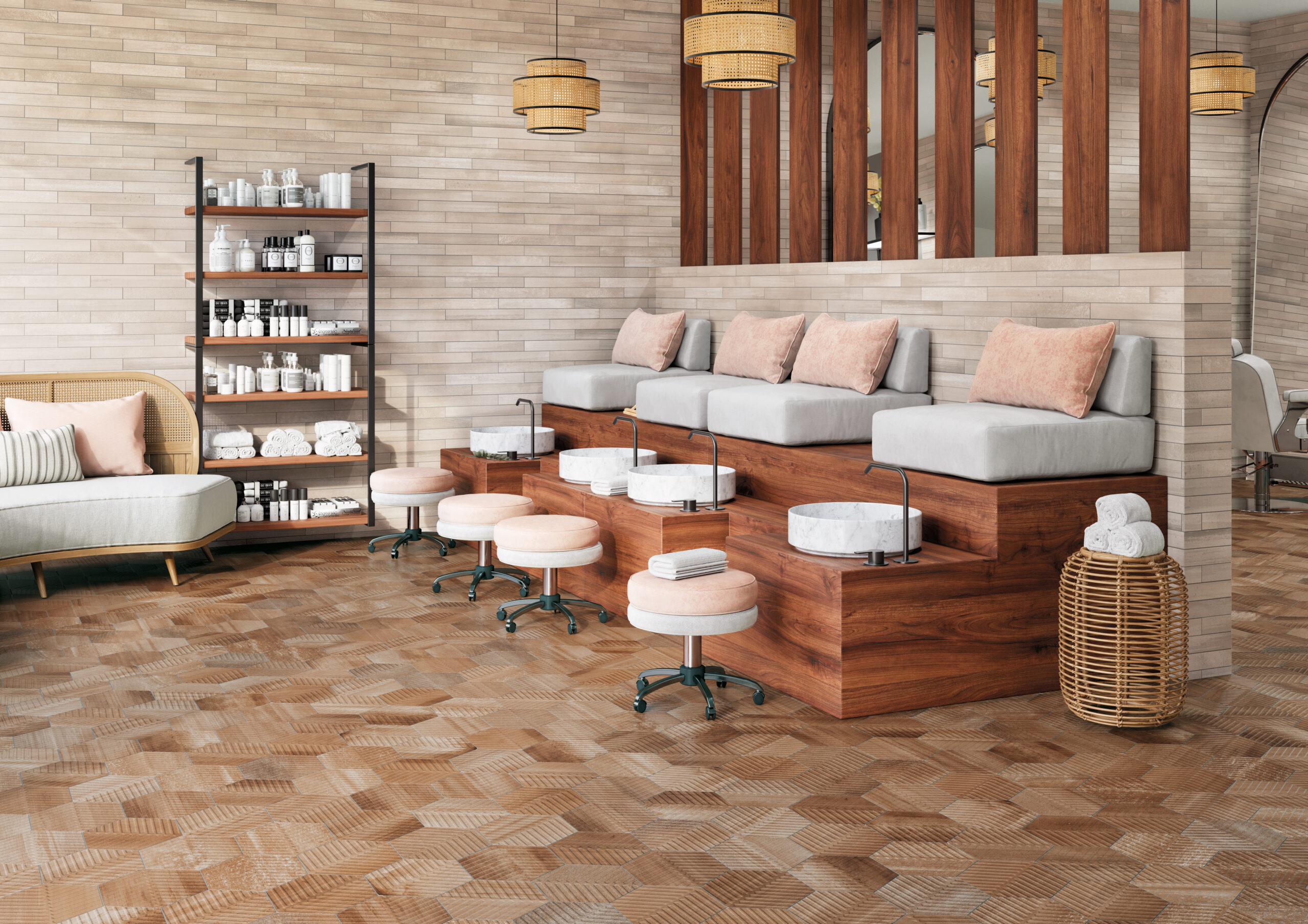
3″x10″ undulating wall brick in Naranja, Taupe, and Bianco
Love What You See? Great Design Starts With a Sample!
You can quickly and easily order a sample of any Crossville tile through Crossville’s Sample Express. To quickly order free tile samples, just set up an account here to get started. Once you have an account, ordering a tile sample is as simple as clicking a button — and samples are always free.
Other Great Reasons To Set Up An Account
Order complimentary samples.
Save your favorite products and resources.
Create and organize projects.
Review sample order history.




